
Here are a few pictures from the trip that Lance and his sister Elaine took to visit family out in Big Sky, Montana, near Yellowstone.
Our flight out got cancelled and rescheduled for a couple days later, so we had some time together in Branford, CT. We visited the Shoreline Trolley Museum, which preserves a stretch of the old trolley line that used to run east from New Haven, along with some of the maintenance sheds. If you visited our family back when we lived in Stony Creek, we probably took you on a walk along the old trolley right-of-way that ran between our house and the water, across an old wrought-iron bridge and through picturesque salt marshes, but the Museum section still has the rails and caternary, and the cars still run.

One of their historical cars still has the "Stony Creek" destination sign. The village of Stony Creek, a part of Branford that was largely populated by the Italian stone masons who worked in the granite quarry, was not dry, like the towns around it, and so was a popular Saturday night destination. The trolley line had some "party" cars, with concrete floors that could easily be hosed down after getting their very drunk patrons back into New Haven.
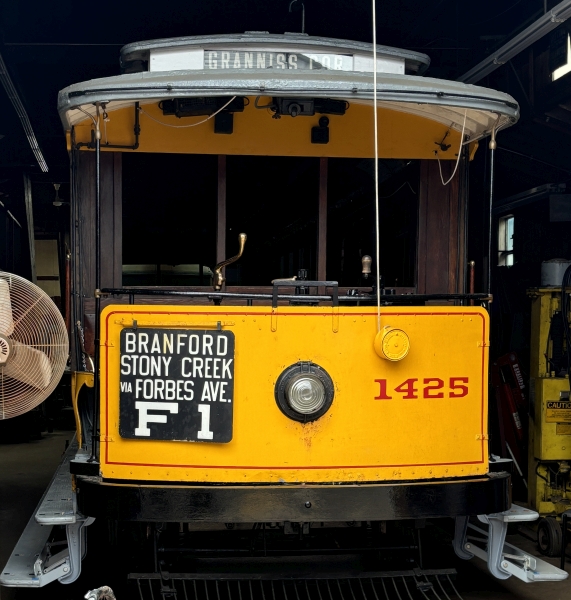
We also visited Mystic Seaport, with its square-rigged whaling ship and recreated blacksmith shop, cooperage, and rope walk. They are probably the leading center for rebuilding historical wooden vessels, and they go to great lengths to include walkways so that the public can observe their work, like on this old fishing schooner.
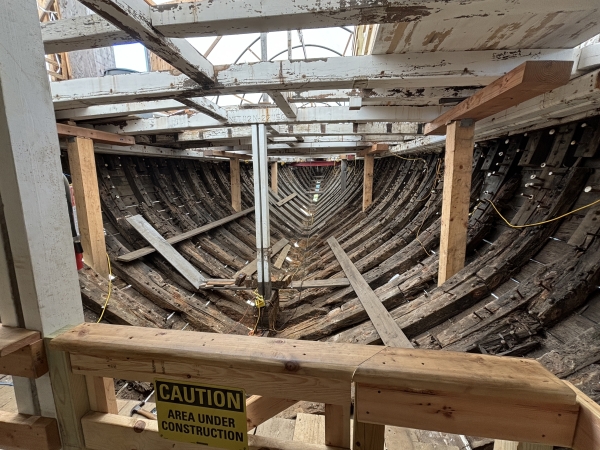
They also had a children's science building sponsored by the NSF, with displays showing, for example, the mechanical advantage from pulleys. My favorite display (for somewhat older children) was a fan table with a small 3-wheeled cart to which you could magnetically attach various sail airfoils, and then see which way the cart would be blown. Since the wheels prevented any leeway, you could point quite high into the wind with a fore-and-aft sail. They also had sticks with yarn tell-tales attached, so that you could see where the airflow was laminar versus turbulant.
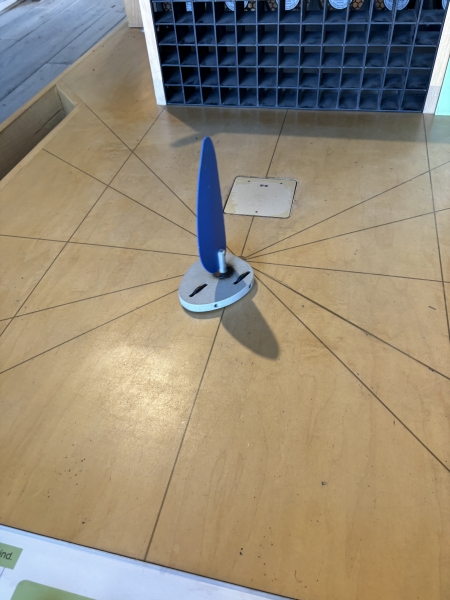
Then we took our two-day-delayed flight to Bozeman, and drove up To Big Sky alongside up the Gallatin River valley, passing whitewater rafting parties riding down the river. Once you get to Big Sky, wherever you go you can see the surrounding mountains.
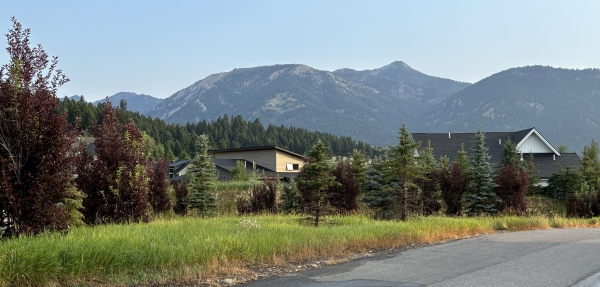
Early on, we hiked up the Beehive Basin Trail to a pleasant tarn.
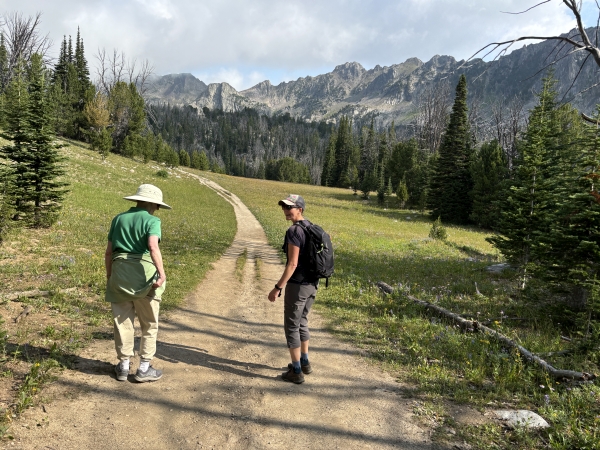
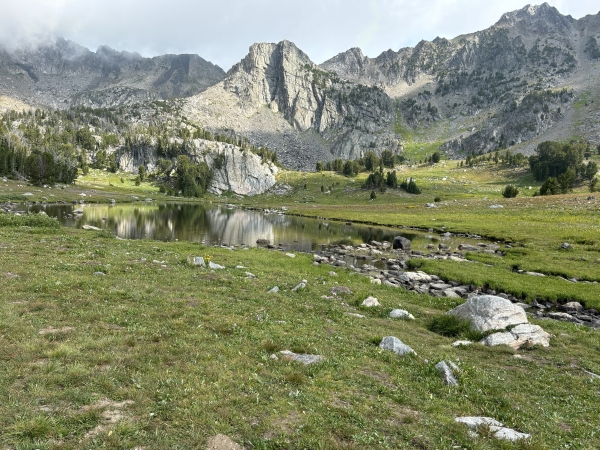
Trails around Big Sky typically run through meadows of perhaps 3'-high grass spotted with many different kinds of flowers.
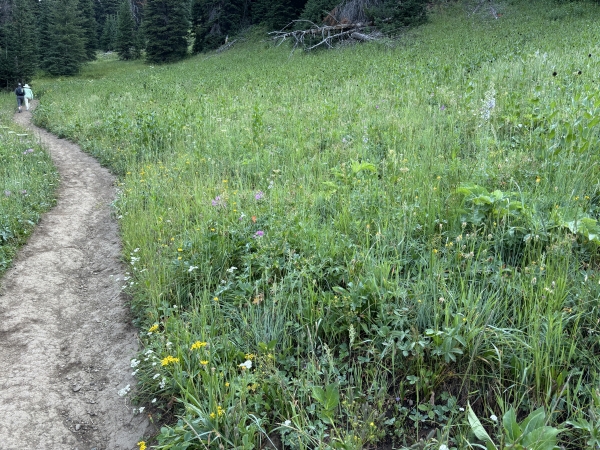
The trees mostly follow the ridges, with the valleys between kept free of trees by frequent avalanches. Over on the distant mountain, you can see some ski trails.
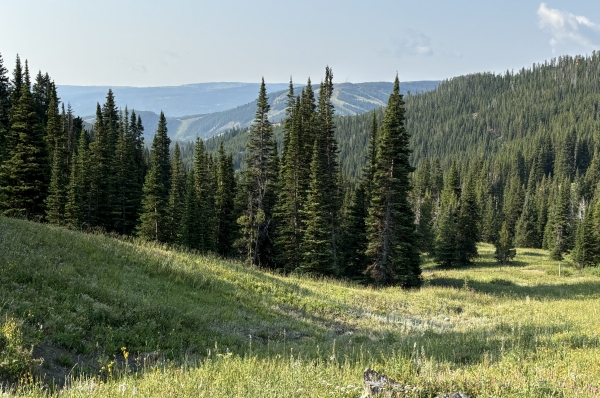
The highest mountain in the area is "Lone Mountain", with a pointed peak carved by glaciers on all sides. That morning, the wind pushed up over the peak was forming a cloud.
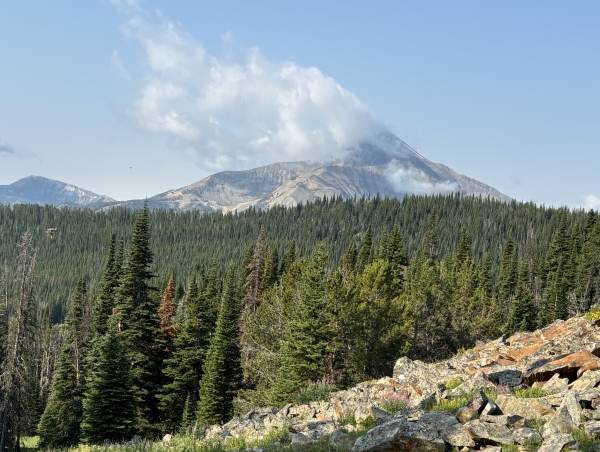
Many of the rocks are "granitic gneiss" with white and black banding called "foliation" that results when granite is heated and squeezed and the minerals line up at right angles to the applied pressure.
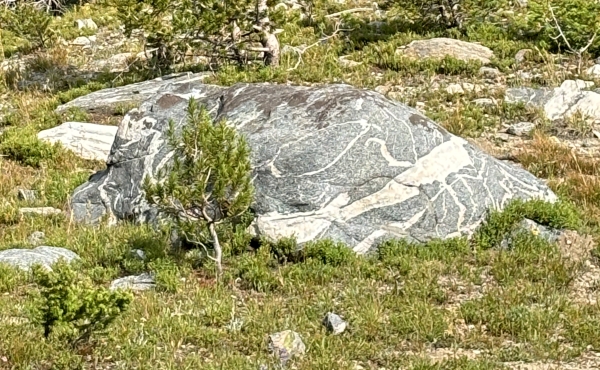
Later that day, we took a hike along a stream to a waterfall. Big Sky is on a tributary of the Gallatin River that is called "the West Fork", and this stream is a tributary of that tributary known as "the South Fork of the West Fork".
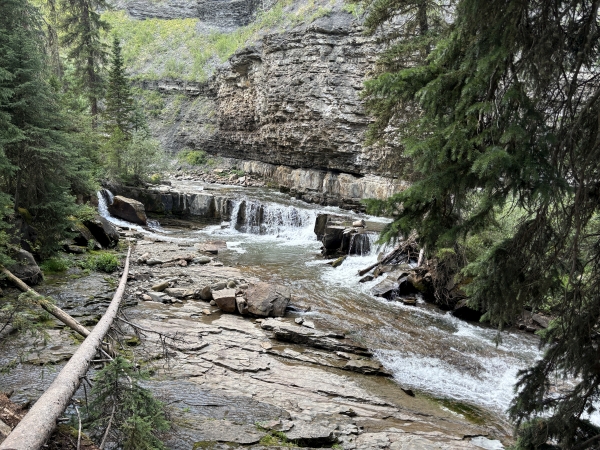
The falls are called the Ousel Falls, named after the bird that guidebooks call a dipper
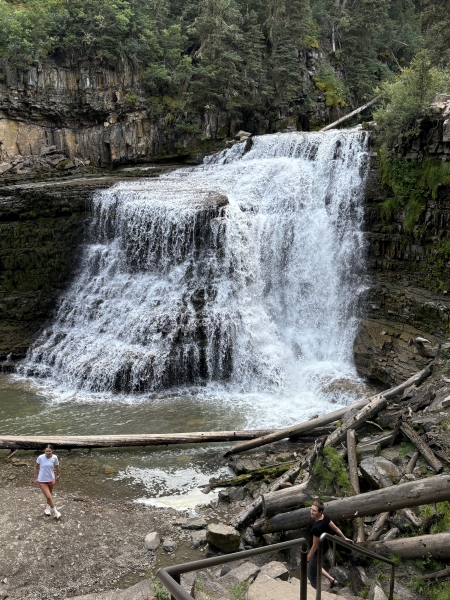
The next day, we did a bunch of local trails. Early in the day, we saw the hot air balloons, which prefer the quieter air of morning.
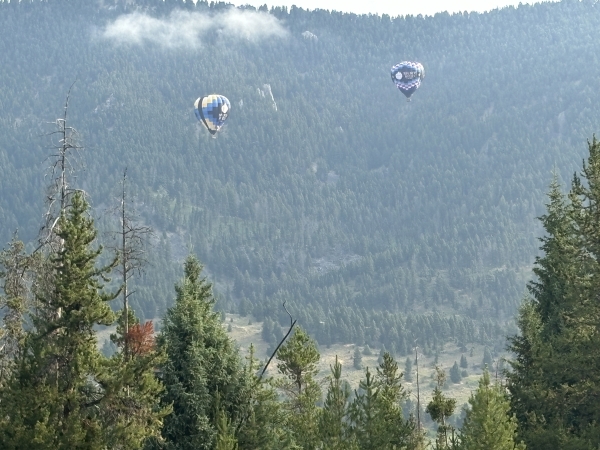
We checked out the community chapel where our relatives' congregation meets (along with other congregations), which was built with a view up to Lone Mountain. The stained glass windows have partial borders that honor traditional designs while still expressing the mountain mystique.
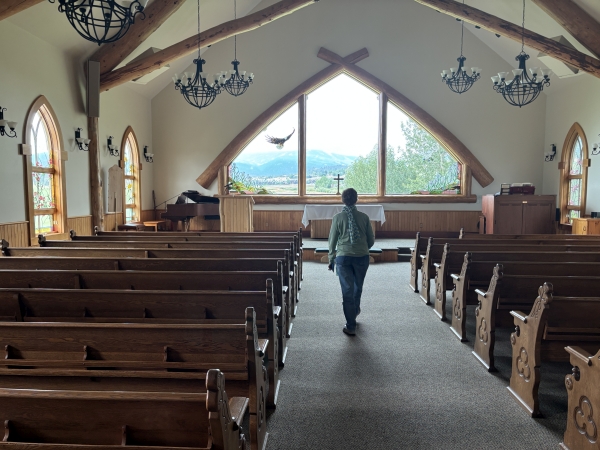

Later that day, we took a long hike up on the slopes with great views out over the town, and to Lone Mountain beyond.
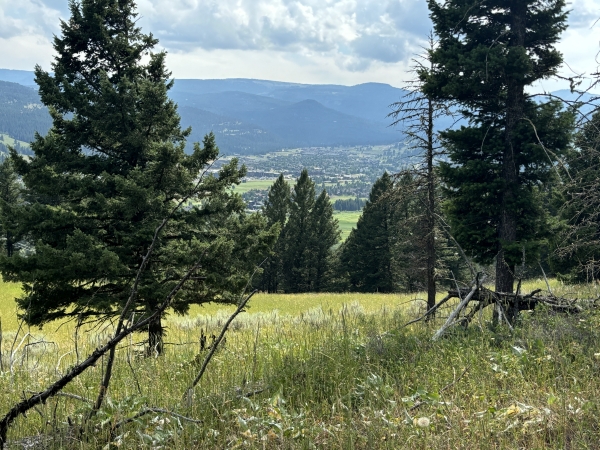
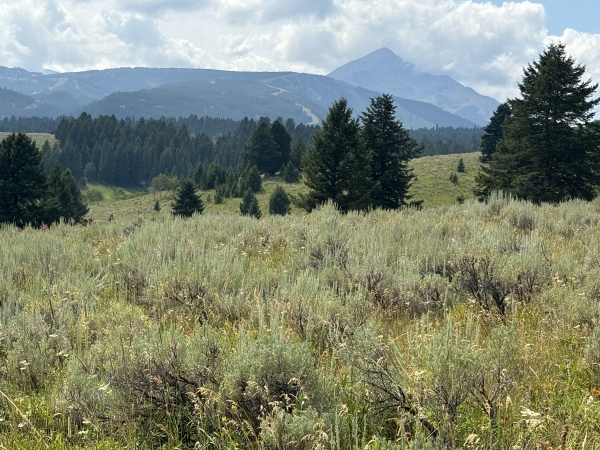
The next morning, we drove down to the Grizzly and Wolf Discovery Center in West Yellowstone. which cares for animals that aren't able to survive in the wild either due to injury or because they've become too used to getting food from humans. The place does a great job of providing them with as much enrichment as possible, saying that their mission now is to help people understand more about their wild relatives.
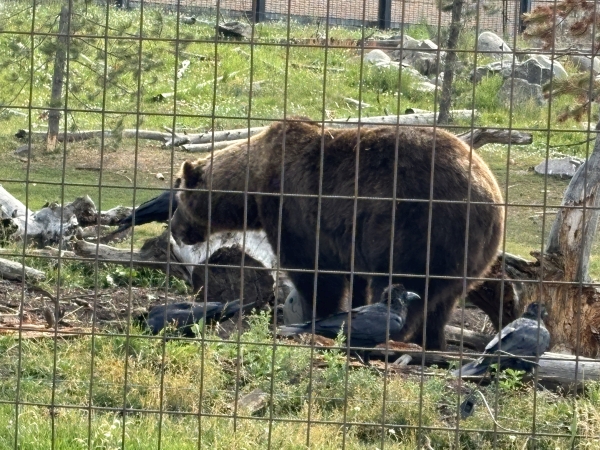

Wolves have much longer legs that the coyotes that we're used to.
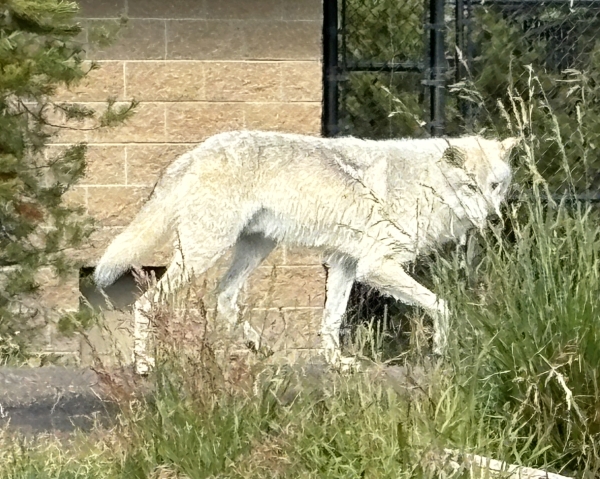
They have a pair of great horned owls who were pushed out of their nests when young by aggressive siblings, and so never learned how to be an owl, and, as the keepers say, "We can't teach them that."
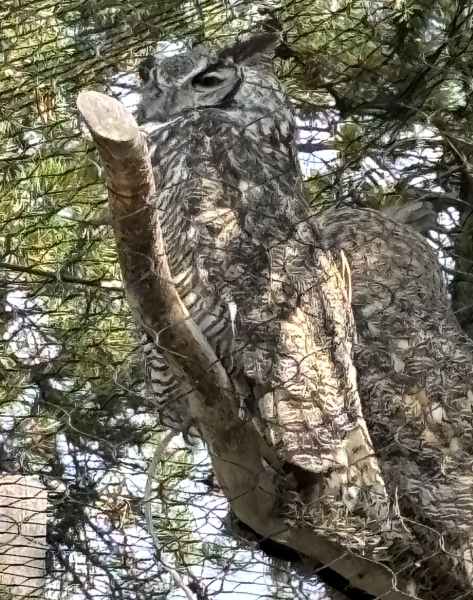
They also have a small aquarium with otters, and with native fish like the "greyling" with their colorful dorsal fin, which are being revived after being almost out-competed by non-native lake and rainbow trout.
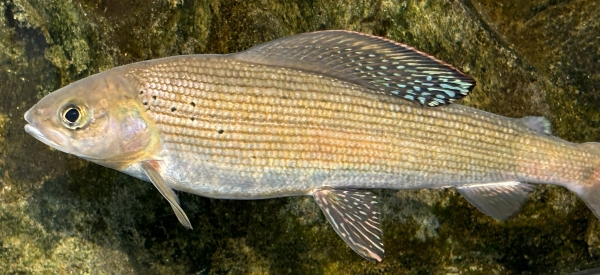
They offered a "Keeper Kids" program where kids could put out food for the bears and then do their best to cover their contributions with logs and rocks so that the bears would have to dig for them.
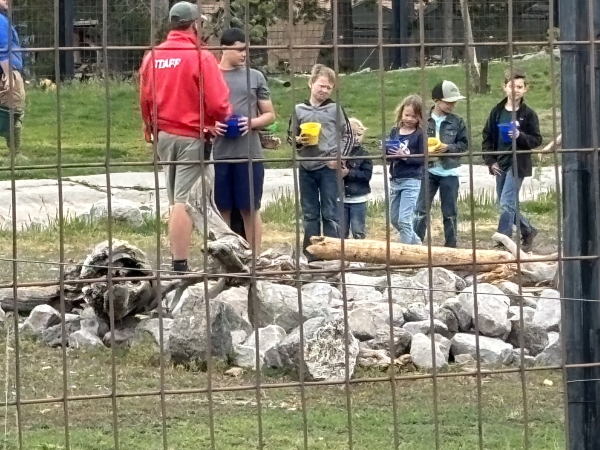
And you can relax with a bear in the gift shop.
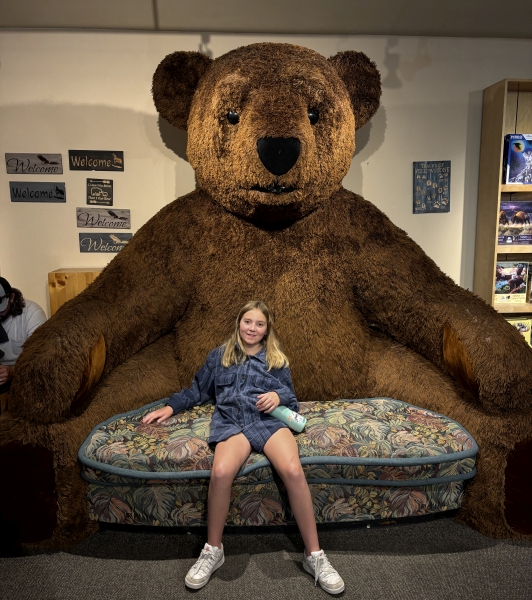
The road back up to Big Sky displayed lots of interesting rock layers, but we'll need more time to study the geology guide that we got in the gift shop before we'll be able to explain them.
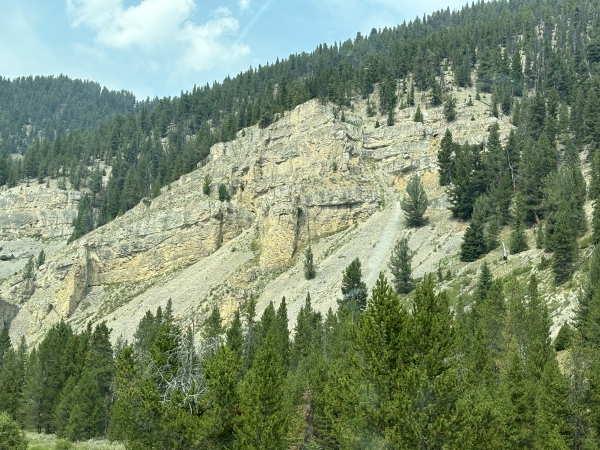
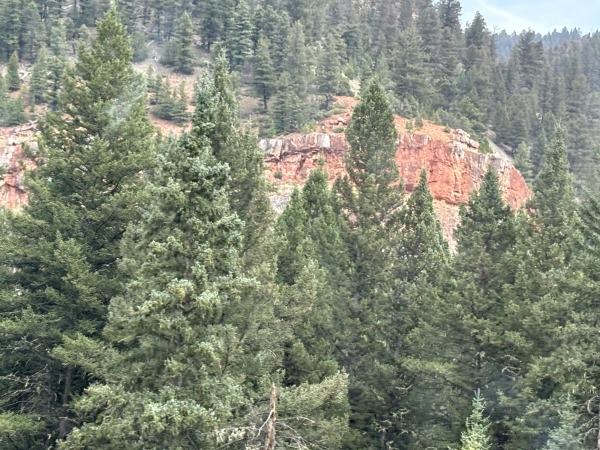
All in all, an amazing trip with fine folks and great scenery, and lucking out timing-wise with good weather and no smoke.
Back to ramshaw.info home page
Updated 2024-08-13